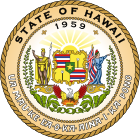This article needs additional citations for verification. (February 2018) |
| Year | Republican | Democratic | Third party(ies) | |||
|---|---|---|---|---|---|---|
| No. | % | No. | % | No. | % | |
| 2020 | 196,864 | 34.27% | 366,130 | 63.73% | 11,475 | 2.00% |
| 2016 | 128,847 | 30.04% | 266,891 | 62.22% | 33,199 | 7.74% |
| 2012 | 121,015 | 27.84% | 306,658 | 70.55% | 7,024 | 1.62% |
| 2008 | 120,566 | 26.58% | 325,871 | 71.85% | 7,131 | 1.57% |
| 2004 | 194,191 | 45.26% | 231,708 | 54.01% | 3,114 | 0.73% |
| 2000 | 137,845 | 37.46% | 205,286 | 55.79% | 24,820 | 6.75% |
| 1996 | 113,943 | 31.64% | 205,012 | 56.93% | 41,165 | 11.43% |
| 1992 | 136,822 | 36.70% | 179,310 | 48.09% | 56,710 | 15.21% |
| 1988 | 158,625 | 44.75% | 192,364 | 54.27% | 3,472 | 0.98% |
| 1984 | 185,050 | 55.10% | 147,154 | 43.82% | 3,642 | 1.08% |
| 1980 | 130,112 | 42.90% | 135,879 | 44.80% | 37,296 | 12.30% |
| 1976 | 140,003 | 48.06% | 147,375 | 50.59% | 3,923 | 1.35% |
| 1972 | 168,865 | 62.48% | 101,409 | 37.52% | 0 | 0.00% |
| 1968 | 91,425 | 38.70% | 141,324 | 59.83% | 3,469 | 1.47% |
| 1964 | 44,022 | 21.24% | 163,249 | 78.76% | 0 | 0.00% |
| 1960 | 92,295 | 49.97% | 92,410 | 50.03% | 0 | 0.00% |
 |
|---|
The politics of the U.S. state of Hawaii are typically dominated by the Democratic Party of Hawaii. The Democratic Party in Hawaii was formed in 1900, by supporters of Queen Liliʻuokalani. For the first half of the twentieth century, the Republican Party ruled comfortably, dominating local politics until the end of World War II.[2] After the war, Honolulu police officer John A. Burns began organizing plantation laborers, including many Japanese Americans and Filipino Americans and built a coalition that gradually strengthened the Democratic Party in Hawaii.[3] This culminated in the Hawaii Democratic Revolution of 1954, after which Republican political influence in the islands was greatly diminished.
As a result, Hawaii's congressional politics are typically dominated by Democrats since statehood in 1959. The state has elected just one Republican U.S. senator, Hiram Fong, who served from 1959 to 1977, and two GOP House members.[4] The rest have been Democrats. Only two Republicans have been elected governor, and Linda Lingle was the only one to be re-elected, in 2006.
Hawaii has supported Democrats in every presidential election in which it has participated, except 1972 and 1984, when incumbent Republican candidates won 49-state landslides. In 2004, John Kerry won the state's 4 electoral votes by a margin of 9 percentage points with 54% of the vote. Every county in the state supported the Democratic candidate. In 2008, Barack Obama won by an overwhelming 45-point lead: 72% for the Democrat and 27% for Republican John McCain. Hawaii is the only actual state that gave either candidate more than 70% of the vote. Obama again won Hawaii by a large margin in 2012, suffering only a small swing against him, winning 71% to 28% for Republican Mitt Romney. Hawaii once again gave a higher vote share to Obama than any of the 49 other states, though on this occasion, Obama's vote was not quite as high as his challenger's best state (Utah, where Mitt Romney polled 73%).
- ^ Leip, David. "Presidential General Election Results Comparison – Hawaii". US Election Atlas. Retrieved January 3, 2023.
- ^ "History". Democratic Party of Hawai‘i. 2015-10-27. Retrieved 2017-10-02.
- ^ Nakamura, Kelli Y. "John Burns". Retrieved 16 October 2014.
- ^ Bernstein, Adam (2004-08-20). "Hiram Fong, 97; Senator From Hawaii for 18 Years". Los Angeles Times. ISSN 0458-3035. Retrieved 2017-10-02.
